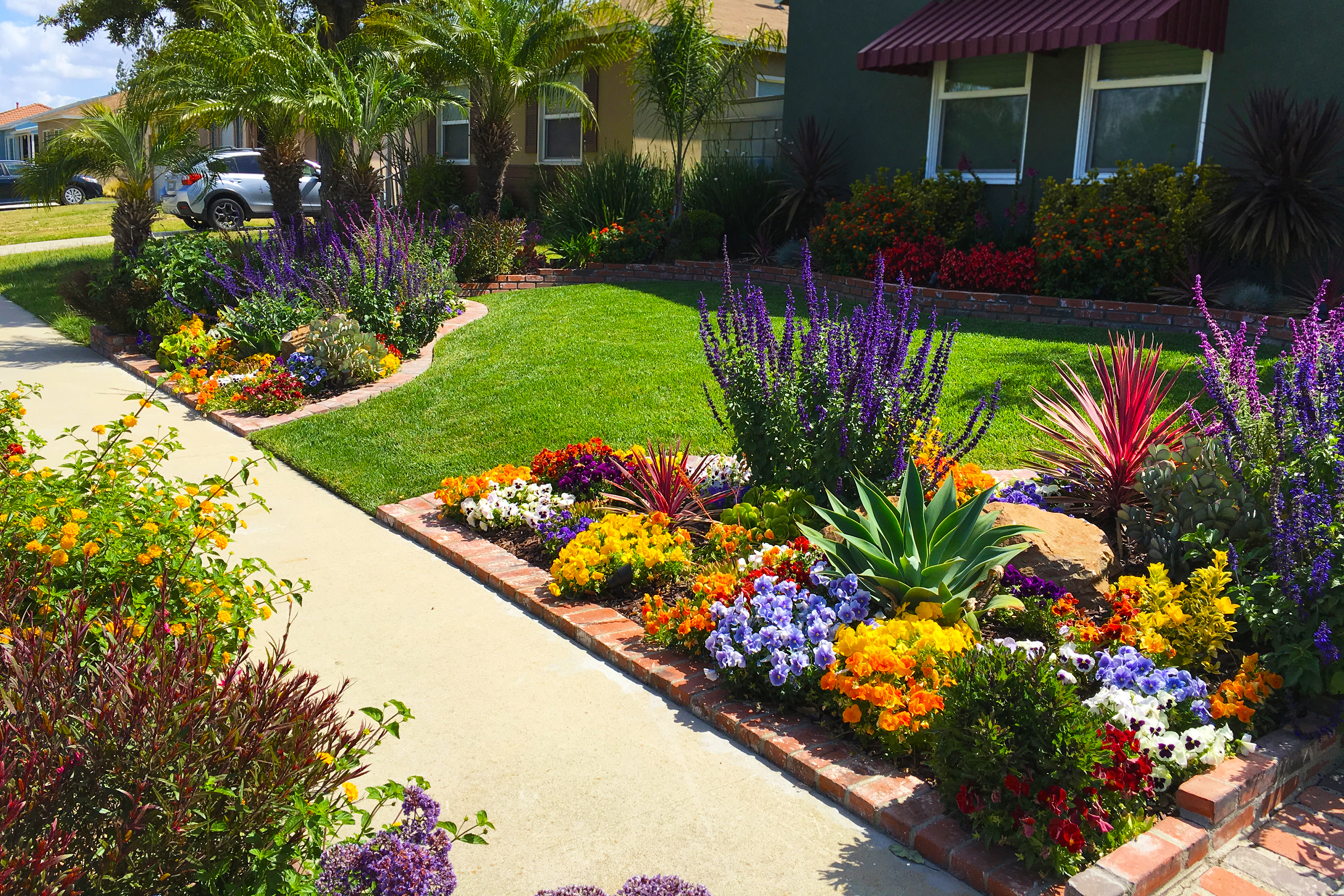A Comprehensive Overview to Creating and Implementing Effective Landscaping Solutions
The art and science of landscape design prolong beyond plain looks; they include a thoughtful integration of layout concepts, environmental stewardship, and practical execution. A detailed guide to effective landscape design options begins with an in-depth understanding of your outdoor room, stressing the value of proportion, balance, and unity. As we discover lasting methods and the selection of appropriate flora, the implications for biodiversity and community well-being become increasingly evident. What techniques can one employ to make sure these landscapes not only grow but also flourish attuned to their environments?

Comprehending Landscape Design Principles
One could wonder what foundational aspects add to reliable landscape layout. At its core, effective landscape layout depends upon numerous key principles that direct the plan and choice of aspects within a space. These concepts include unity, rhythm, percentage, and balance, each offering to develop a harmonious outdoor setting.
Unity refers to the natural relationship amongst various parts, ensuring that they collaborate aesthetically and functionally. Balance can be achieved with asymmetrical or in proportion arrangements, permitting the landscape to feel steady and welcoming. Percentage involves comprehending the range of components in relation to each other and the surrounding atmosphere, advertising aesthetic consistency and comfort.

Analyzing Your Outdoor Space
Before carrying out the concepts of landscape layout, an extensive analysis of your exterior space is important. This preliminary analysis helps define the extent of your landscaping project and makes sure that your layout straightens with the unique qualities of your property. Begin by analyzing the measurements of your room, taking specific dimensions to understand the available area for different aspects such as outdoor patios, yards, and pathways.
Following, observe the existing features of your landscape, consisting of topography, dirt top quality, and drain patterns. These aspects dramatically influence plant selection and placement. Additionally, evaluate the sunlight exposure throughout various areas throughout the day, as this will affect the types of plants that prosper in your yard.
Think about the microclimates produced by frameworks, trees, and other obstacles, as they can affect temperature and wetness degrees. Take note of any existing plants or hardscape aspects that you want to eliminate or preserve. This comprehensive examination prepares for a well-informed and reliable landscape design option, ensuring that your design is not only cosmetically pleasing yet likewise functional and sustainable for several years to come.
Lasting Landscaping Methods
These methods not just promote ecological balance however also improve the visual and practical value of a landscape. Carrying out reliable irrigation systems, such as drip watering, decreases water waste and makes certain that plants receive adequate moisture (Palm Desert Landscaping).

An additional effective method is the calculated positioning of trees and shrubs to supply all-natural windbreaks and shade, therefore reducing power prices (Palm Desert Landscaping). Rainfall gardens can be integrated into the landscape style to take care of stormwater drainage effectively, filtering contaminants prior to they go into rivers
Picking the Right Plant Kingdoms
Picking the right plants for your landscape is essential to accomplishing both visual charm and environmental consistency. The procedure starts with an understanding of your neighborhood environment, dirt problems, and the specific microenvironments within your landscape. Evaluating aspects such as sunshine direct exposure, dampness degrees, and existing vegetations will certainly browse around this site aid you pick plants that thrive in your special setup.
Consider integrating indigenous plants, as they are well-adapted to neighborhood problems, call for less maintenance, and support local wildlife. Additionally, picking a varied selection of species can enhance biodiversity while reducing the risk of illness and bug outbreaks. It is important to assess the growth routines, growing durations, and seasonal shades of possible plants to produce a dynamic and cohesive landscape.
Furthermore, consider the planned usage of the area; for instance, if the location will experience high foot web traffic, opt for resilient ground covers. By attentively selecting plants that align with both your environmental needs and visual objectives, you can produce a sustainable landscape that not just improves your building yet additionally adds positively to the bordering community.

Application and Upkeep Strategies
When the appropriate plants have been picked for your landscape, the focus moves to reliable implementation and ongoing maintenance methods. Effective installment begins with proper site preparation, that includes soil testing to figure out nutrient degrees and pH, adhered to by modifying the dirt as needed. Thoroughly set up plants according to their development routines and light demands, making certain ample spacing see this here to promote healthy growth.
Irrigation is an essential component of execution. Develop a watering timetable that takes into consideration the details demands of each plant varieties, adjusting for seasonal changes. Using drip irrigation systems can boost water effectiveness and decrease drainage.
Maintenance strategies should be implemented to guarantee the long life and vigor of your landscape. Routine tasks include weeding, mulching, and trimming to manage growth and prevent condition. Fertilizing must be conducted based upon dirt tests, providing the essential nutrients without over-fertilizing.
Checking for diseases and parasites is essential; early discovery can stop significant damages. Seasonal changes to maintenance regimens, such as winterizing perennials and preparing for spring development, will make certain that your landscape continues to be healthy and aesthetically appealing year-round.
Conclusion
Effective execution and recurring upkeep further guarantee the durability and vigor of landscapes. By incorporating these elements, landscapes can be transformed into gorgeous, practical atmospheres that advertise biodiversity and add favorably to neighborhood wellness.
One may wonder what foundational aspects contribute to efficient landscape style. At its core, successful landscape design hinges on several essential principles that assist the plan and choice of aspects within an area.Choosing the right plants for your landscape is important to accomplishing you could check here both aesthetic charm and environmental harmony. It is vital to assess the growth habits, blooming periods, and seasonal shades of possible plants to produce a dynamic and natural landscape.
When the best plants have been chosen for your landscape, the emphasis changes to reliable application and continuous maintenance approaches.